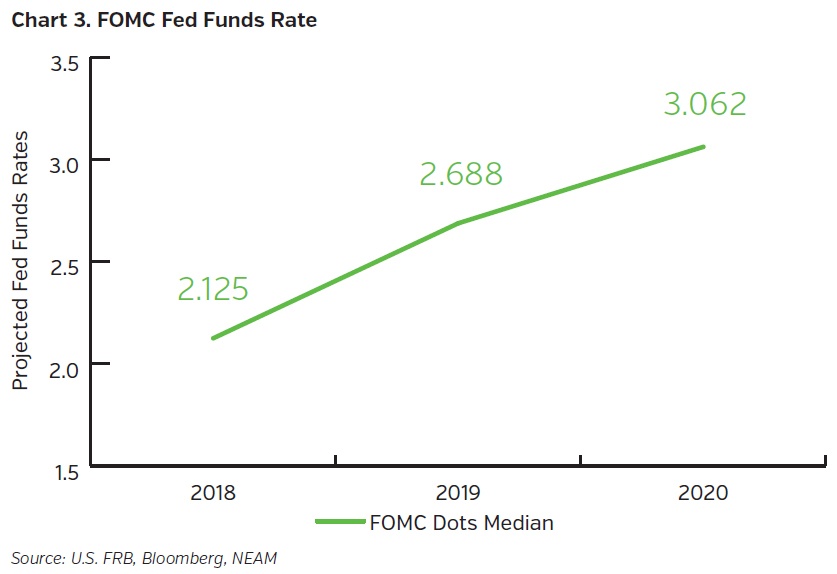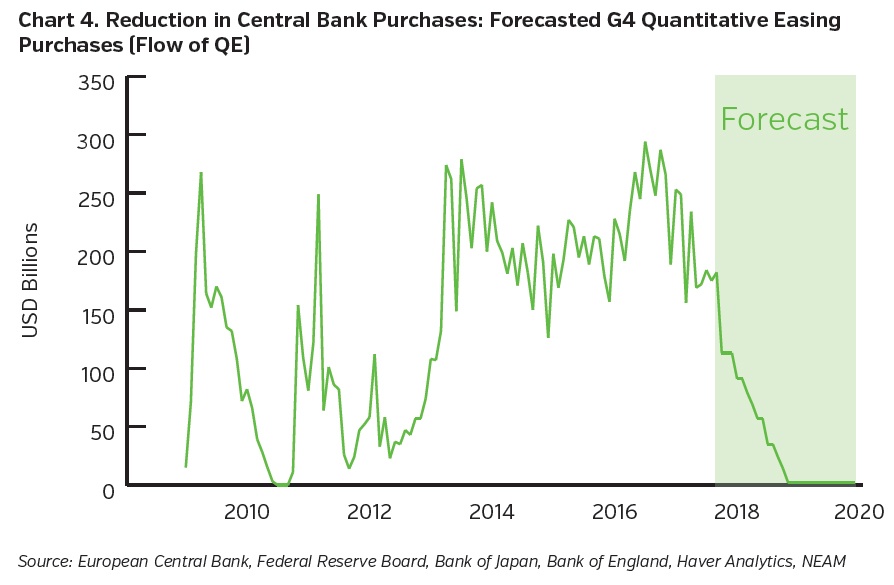In Italia “le cose vanno selvaggiamente” (Irlmaer)
Salvini si è messo nei guai veramente con la sua dichiarazione su Facebook. Non mi sembra se ne renda conto. Forse non conosce appieno il potere in mano alla casta giudiziaria, che ha così esplicitamente sfidato. Un potere di triturare un uomo fino alla morte, di fronte al quale non c’è scudo. Non certo nel voto degli elettori.
Forse era troppo giovane ai tempi di Enzo Tortora e dei tanti “suicidi” in carcere al tempo di Mani Pulite. O non ricorda decenni in cui hanno triturato Andreotti con un pentito, che lo acusava di afer “baciato Riina”.
Salvini si è posto nella classica situazione di essersi messo dalla parte del torto pur avendo sostanzialmente, profondamente ragione. Questa è la situazione preferita dalla magistratura quando ti ha scelto come nemico, perché la “legge” vive di forma e non di sostanza.
Nel suo linguaggio da “giovane”, poco sottile e poco articolato nella sfera leguleia, Salvini intendeva dire una cosa che i suoi seguaci hanno capito al volo: voi magistrati avete dimostrato di non essere “terzi”; avete ostentato il vostro essere “di parte”; insomma vi comportate contro la Lega e contro di me non come un ordine neutrale, ma come un partito avverso. Ora, io vi dico: visto che siete un partito, fatevi votare, come io sono stato votato. Combattete ad armi pari.
Che i magistrati – almeno quelli che hanno perseguito Salvini – siano “di parte”, è perfino inutile farlo notare, tanto è evidente. Il pm di Agrigento, Luigi Patronaggio, che ha incriminato Salvini per i “sequestrati” della Diciotti, è stato fotografato mentre partecipa a un incontro presieduto da Matteo Renzi e dal suo ministro della Giustizia, Orlando (e dopo, Renzi profetizzò che Salvini sarebbe caduto “per via giudiziaria”). Niente di male, si sono subito affrettati a dire i media. Io sono abbastanza vecchio da ricordare un tempo in cui un magistrato, specie in provincia, non partecipava a feste e inviti di persone importanti, ancor meno politici, perché non si potesse sospettare che era “amico” di gente che, magari, avrebbe dovuto inquisire.
Lo so, sembra impossibile, ma c’è stato un tempo in cui i magistrati sapevano che la loro funzione esigeva questo appartarsi ascetico: per la salvaguardia dell’autorità, che è cosa molto diversa dal potere, e della dignità dell’Ordine. Era prima dell’avanzameno automatico nelle carriere . Non a caso “Ordine” si chiamava quello giudiziario, un ricordo di una laica investitura sacerdotale. I magistrati d’oggi si sono conquistati la prerogativa di giocare su tutti i tavoli: lasciare i tribunali per farsi eleggere in un partito, poi tornare in aula come giudicanti o accusatori, fare comunella con amici di partito e anche con avvocati, diventare addetti di un ministro e poi tornare procuratori. Ebbene: questo è patologico, ed è per questo che noi italiani dei giudici abbiamo paura, non rispetto.
La parzialità del pm Patronaggio è dimostrata da altri fatti, molto più gravi a mio giudizio ddella foto con Renzi. Abbiamo visto che l’avviso che ha mandato a Salvini contiene una sola accusa, il sequestro di persona.
E’ una salutare diminuzione. Perché, secondo Repubblica, alla Procura di Palermo il Patronaggio aveva mandato una memoria in cui aveva accumulato una dozzina di capi d’importazione contro Salvini. Riporto:
Articolo 289 ter del codice penale. “Sequestro a scopo di coazione”. Per “costringere” l’Unione Europea alla redistribuzione dei migranti contro la convenzione di Dublino.
Articolo 605. “Sequestro di persona”. Articolo 606, “Arresto illegale”.
articolo 328 .Articolo 323. Abuso d’ufficio.
Violazione, inoltre, dell’ “articolo 5 della Convenzione per la salvaguardia dei diritti dell’uomo. “Nessuno può essere privato della sua libertà”, e quindi dell’art. 13 della Costituzione (“La libertà personale è inviolabile”), e dell’articolo 10 comma tre della Costituzione, che prevede il diritto di asilo allo straniero “al quale sia impedito nel suo paese l’effettivo esercizio delle libertà democratiche”.

Non basta ancora. Patronaggio voleva accusare Salvini anche di “violazione del Regolamento di Dublino del 2013, che stabilisce i criteri per le richieste di “protezione internazionale”. Dell’articolo 10 ter del Testo unico sull’immigrazione: il quale prevede che i migranti vengano “tempestivamente informati” del diritto all’asilo. Dell’articolo 47 della legge 7 aprile 2017 (Legge Zampa), che prevede il rilascio del permesso di soggiorno ai minori non accompagnati. Dell’articolo 60 della Convenzione di Istanbul e l’articolo 7 del decreto legislativo del 19/11/2007, numero 251: norme che prevedono la massima tutela per le donne che hanno subito violenza. Infine, il delitto di non aver indicato subito il porto di sbarco, previsto da norme internazionali, come il “Safety of life” del 1974, ma anche dalla procedura di coordinamento fra Viminale e Guardia costiera (la “Sop 009/2015”).
Il codice usato come mitraglia
E’ evidente da questa serqua che il pm, contro Salvini, ha voluto usare il codice penale come un randello in una rissa; più precisamente come una mitragliatrice o – se vogliamo – un fucile a pallettoni: gli sparo tutta la mitraglia, qualche spezzone lo beccherà. La pretestuosità della massima parte di tali accuse è stata poi comprovata dal fatto che i poveri profughi clandestinis enza documenti, se la sono squagliata dal centro d’accoglienza, e la UE ha rimproverato l’Italia per questo dicendo che andavano detenuti in centri chiusi. Patronaggio poi, passata la rabbia, ha contenuto la mitraglia ad una sola accusa mirata. Bene così,ma è stato evidente che ha agito per animosità di fazione. Impulsivamente, come ha agito Salvini: ma a un magistrato l’impulsività non produce danni, al politico sì.
La parzialità – nel senso di essere di parte, politicamente aderente a fazione – del procuratore di Genova Francesco Cozzi, che “dà la caccia” ai 46 o 49 milioni della Lega (che non sono mai esistiti)
non ha nemmeno bisogno di essere intuita, perché è scritta nella sua biografia: è stato direttore dell’ufficio dei rapporti con il Parlamento per un ministro del governo Prodi (1996-98), l’allora ministro della Giustizia Giovanni Maria Flick, che dell’indipendenza dell’ordine giudiziario fece strame quando fece ri-arrestare Eric Priebke nel 1996, dopo che costui era stato assolto dal tribunale militare. Ed oggi Flick, importante genovese, ha espresso un giudizio radicalmente negativo sul governo “del cambiamento”, con termini, usati da tutto l’Establishment (da Amato, da Cacciari…) che bollano questo governo come eversivo, illegittimo, da rovesciare con ogni mezzo.
Procuratori da ricusare?
E’ un procuratore che i difensori della Lega potevano “ricusare” – nella causa sui fondi della Lega con la motivazione che non appare credibilmente “terzo” ? Potevano invocare la”legittima suspicione”, ossia il “legittimo sospetto che, nel corso di un processo, testimoni e giudici possano essere influenzati da circostanze ambientali”? Non so abbastanza di legge per saperlo. Da cittadino, posso attestare che ho avuto un “presentimento” anche sulla causa che questo procuratore s’è trovato in mano, il collasso del ponte Morandi. Infatti dopo due settimane, ha iscritto come indagati soprattutto dei dirigenti del Ministero Trasporti; e certo, alcuni singoli individui di Autostrade, per omicidio”colposo”, reato comparabilmente lieve. Per Autostrade (che non ha nemmeno nominato) il pm ha detto: «L’iscrizione avviene anche nei confronti di una società, c’è un’ipotesi di iscrizione per violazione delle legge 231»
Si tratta di “responsabilità amministrativa”, una responsabilità secondo me minore di quella penale . Mi pare un reato da Corte dei Conti. Come ha detto lo stesso Cozzi, essa “ è ricollegata all’unico reato che può essere presupposto dalla 231, tra quelli per i quali c’è l’iscrizione, che è omicidio colposo con violazione delle norme sulla sicurezza del lavoro». Altri reati visibili ad occhio nudo, dalla segretezza del contratto di Concessione agli immensi profitti concessi da governanti molto amici, e alla riduzione all’osso delle spese di manutenzione promesse e non adempiute, fino ai funzionari pubblici che vengono assunti con grossi stipendi da Atlantia – su questi, cade l’amnesia. I padroni se la cavano con qualche risarcimento.
Ma torniamo al dunque. A Salvini che sfida questi magistrati dicendo, “io sono stato votato e voi no”. Intende dire: voi siete di parte, come sono di parte io: ma io lo sono legittimamente, perché mi sono esposto al suffragio popolare, voi no.
Ha ragione nella sostanza, ed è questo che suscita la sete di sangue nella magistratura, che sente come un delitto da punire. Lesa maestà! Ha smascherato la ipocrita finzione di “terzietà” della casta, ed questo che essa non perdona, perché la colpisce nel potere indebito che ha conquistato da Mani Pulite: il “potere ispettivo” preventivo sulla società, gli agenti economici, la politica, i governanti. Che fa della magistratura il vero gruppo di governo: deep state improprio e indebito, “legale” nella forma e radicalmente anti-democratico, radicalmente ingiusto nella sostanza.
Quindi Salvini è nei guai grossi. Perché ha smascherato questa finzione della magistratura “terza” e neutrale, significa averla contro con la rabbia che le ci fa’ paura, e non aver più una difesa “legale” su cui contare e fidare. Ha solo la “legittimità” che gli viene dal voto. Che non ha nessun potere reale, nel senso di concreto. I giudici possono intercettarlo, accusarlo di qualunque cosa, mandare la polizia ad arrestarlo in via preventiva, e lui non può farci niente. Nella pratica, per mettersi contro un potere del genere, capace di tali esorbitanze, un politico dovrebbe avere un partito armato – perché qui si esce dalla “legalità” e si entra in un’altra sfera della politica, che non voglio evocare, e che se si vice viene chiamata “lotta di liberazione”). Inutile dire che non ha un partito armato, mentre le procure hanno la polizia giudiziaria ai loro ordini.
Siamo in una (caotica,all’italiana) situazione di conflitto fra poteri che scivola, non ce lo nascondiamo, nelle vie di fatto, ossia nella guerra civile. A questo punto, c’è solo una figura che può attenuare il conflitto e incanalarlo; come capo supremo dei tre ordini, come presidente del Consiglio Superiore della magistratura, può chiedere ai giudici di riconoscere che sono venuti meno alla loro “terzietà”, ed hanno parteggiato, e dopo esigere da Salvini qualche riparazione severa.
Guardate che un presidente della Repubblica lo ha fatto. Quando Craxi, capo del governo, accolse una delegazione che gli espose le violazioni giudiziarie che stavano triturando Enzo Tortora, accusato di delitti da cui risultò alla fine completamente estraneo (ma dopo anni di galera e lo sviluppo del cancro), “il Consiglio Superiore della Magistratura voleva votare una mozione di censura del presidente del consiglio Craxi. Il presidente della repubblica, Cossiga, rilevano l’enormità di questa pretesa del parlamentino della giustizia di sfiduciare il governo, minacciò di far intervenire i Carabineri per sciogliere la seduta manu militari, se avessero osato insistere.
Perché il Consiglio “si è posto fuori dalla legge, ha gravemente compromesso i rapporti con altri organi dello Stato”, ha commesso una inaudita usurpazione di poteri e gravemente leso le prerogative del capo dello Stato”. ”
Orbene: vi pare che l’attuale abitante del Quirinale abbia la capacità di elevarsi “sopra le parti”, e fare l’estremo garante nel conflitto fra i poteri? Vi pare che abbia il senso dello Stato e i coglioni quadri del Gran Sardo?Giudicate voi.
Per questo ho citato Irmaer: “in Italia, “le cose vanno selvaggiamente”.
E vado in vacanza per una settimana.
Sperando che il Quirinale mi sorprenda.
Esiste una sola emergenza: il fascio grillismo

Al classico appuntamento di fine estate, quella che una volta era la festa dell’Unità, l’ex ministro Delrio ha dato voce al pensiero di tutta la sinistra. In Italia esiste un’ emergenza democratica, anzi l’emergenza democratica. Dopo la marcia su Roma del 4 aprile dei grillofascisti o fascioleghisti, gli esponenti del Pd chiamano alla Resistenza, anzi diremmo noi emiliani alla” resistenza”.
Reduce dalle vacanze fuori dall’Italia, ho avuto un soprassalto, ho pensato che essendo parte dell’Italia che non ha votato i grilloleghisti, la chiamata alle armi dei vari Calenda, Delrio e Renzi, riguardasse anche me, ma prima di partire per la Resistenza ho dovuto guardare se avevo qualcosa da mettermi, chessò un rolex come Gad Lerner, un abito di Brioni come gli esponenti della grande industria, una Ferrari come i grandi finanzieri o come Balotelli o un sito istagram ultravisto come molti artisti. Dato che il mio guardaroba era sfornito, mi sono chiesto perché dovevo arruolarmi, visto che giornalisti, magistrati, professori universitari, grand commis dello Stato, molto engagè a sinistra, erano ancora tutti liberi, anzi impegnati ad occupare giornali e canali tv, mentre in Turchia Erdogan li aveva messi in galera.
Poi ho pensato che non li avessero arrestati perché da noi mancano le carceri, infatti girano liberi anche stupratori e pedofili, per non parlare di spacciatori e ladri. Però anche i banchieri erano al loro posto e un colpo di Stato serio non lascia il controllo dell’economia nelle mani di gente legata all’opposizione, perfino Finmeccanica è ancora nelle mani di Profumo, uno che votava alle primarie del Pd, anche se per Rosy Bindi. Allora mi sono seduto e mi sono chiesto: non sarà che il Pd, non avendo uno straccio di idea, pardon di bandiera, ha tirato fuori dall’armadio il gonfalone decorato della Resistenza, dopo che in epoca renziana i partigiani dell’Anpi non venivano neppure invitati alle feste dell’Unità?
Non erano i resistenti veri, quelli senza rolex, che venivano sbertucciati dalla Boschi, perché contrari alla riforma costituzionale renziana, che veniva applaudita dagli industriali, che, è vero, non avevano tutti il rolex, c’erano pure Patek Philippe, Vacheron e altre prestigiose marche,di Seiko non se ne vedevano molti. Non era lo stesso ministro Delrio ad accompagnare un Renzi trionfante a tenere un comizio pro riforma costituzionale, agli operai della Ferrarini, la cui Ad è vicepresidente di Confindustria?
Oggi che quegli operai li vedrebbero molto volentieri, i nostri resistenti sono spariti. Prima della marcia giallo- verde, l’Italia era sotto il controllo assoluto del Pd: dal Presidente della Repubblica in giù, il Pd controllava tutto, eppure nessuno ha sentito il bisogno di tirare fuori dall’armadio il gonfalone della Resistenza, cosa è cambiato in questi tre mesi da giustificare un tale allarme democratico?
Nulla.
I nuovi governanti hanno inasprito la politica di Minniti sui migranti e fatto molto chiasso, dichiarazioni, tweet, insomma, chiacchiere. Cosa preoccupa allora l’establishment?
Il voto degli italiani, così radicale che potrebbe spingere questi a far saltare il blocco di potere che frena questo Paese e lo porta alla morte, facendo emigrare gli italiani, oltre 5,5 milioni e illudendosi di sostituirli con immigrati, senza le competenze e le intraprendenze di chi è stato costretto ad andarsene, perché stanco di un sistema relazionale, che “fotte” il merito e favorisce il clientelismo.
I ricercatori se ne vanno perché l’Università italiana è pletorica e baronale, non perché c’è l’emergenza democratica.
Anzi, sono i cantori della democrazia come i dirigenti del Pd, che “ chiagnono e fottono”, mentre gridano al fascismo avanzante, continuando a sistemare i loro amici. I poteri forti hanno paura e spingono il loro partito di riferimento, il Pd, alla lotta. Ora io non so se gli attuali governanti salveranno l’Italia, personalmente ne dubito, ma sono lì da soli tre mesi.
Di certo il ritorno al potere di questo Pd non è una soluzione e gli italiani questo lo hanno capito. Non sarà allora che il problema non è il fascismo, ma il voto degli italiani? I resistenti col rolex hanno sempre avuto un po’ di puzzetta sotto il naso.











